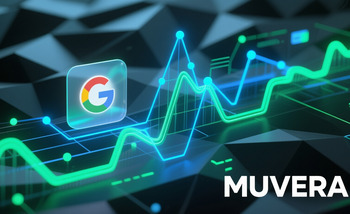A Quick Guide to Image Optimisation for SEO
As they say, “A picture paints a thousand words.” Because most of us are attracted to visually appealing things, it makes sense to add relevant images to your website. Not only will this entice more people to visit you, but it can also help improve the overall web user experience your site can offer, which encourages more return visits and conversions.
But did you know that image optimisation for SEO and using the right web imagery can also help boost your search rankings?
Contents
The Importance of Images to SEO
Apart from the advantages discussed above, making a web page visually attractive can offer you two significant benefits. First, it makes it easier for your web visitors to absorb the information that you’re sharing with them. Our brain can process images faster than text. Because of this, adding relevant pictures or diagrams to a blog post or article makes it easier for your audience to understand your content.
Second, it helps optimise your site for search engines, specifically Google. Adding images to your website provides you with the opportunity to tell the search giant that your site is 100% relevant to the keywords you’re targeting. Because the search giant seeks to provide users with the best result and web experience possible, your site is more likely to receive a higher search ranking when you have relevant web images.
Optimising Your Web Images
Unoptimised web images can hurt your site’s performance. They are some of the biggest reasons why it takes a long time for some websites to load. This is why image optimisation for SEO is crucial when adding pictures to your webpages.
1. Image pixel size optimisation
There are factors you need to take into account when it comes to the size of your web images.
a. Pixel dimension
Make sure that your images are not larger than they have to be. Otherwise, your website will have no choice but to resize them. This will result in slower page loading times since in order to view your webpage, visitors have to download extra pixels that they won’t even see.

b. Cropping
When your images are too big, there’s also the likelihood that your website content management system (CMS) will crop them. However, when your CMS crops an image, it doesn’t mean that the extra pixels have been removed. They are not just being displayed. This means your web visitors still need to download those extra pixels.
c. Tools
There are several tools that you can use to resize large images. They are:
- Content management system such as WordPress
- Online systems such as cropp.me, resizeyourimage.com, and pixenate.com
- Desktop software such as Adobe Photoshop
2. Image compression optimisation
After resizing and cropping your images to the right size and dimension, you must compress them for use on the web. However, please take note that this process can reduce image quality, so make sure that you choose your settings carefully.

a. WordPress plugin
If you’re using WordPress to manage your site, the most efficient way to compress images is to use a compression plugin called Compress JPEG & PNG images. Follow the steps below for best results:
- Install this plugin https://wordpress.org/plugins/tiny-compress-images/.
- Follow the instructions that will appear on the screen to register and create the API key you’ll need. You’ll need to provide an email address for this step.
- Once your email address has been verified, you can now create the API key.
- Within the plugin settings of your WordPress account, add the API key. This will allow you to take bulk optimisation actions via the plugin settings.
b. Online tools
Several online tools can help you compress images. They include:
- tinyjpg.com
- tinypng.com
3. Alternative (alt tag) and title tag text optimisation
The alt tag and title tag are essential. The alt tag, in particular, tells search engines what an image is all about. It is also a great help for the visually impaired as it tells them what’s on the image through screen readers. Also, the alt tag is what your visitors will see when an image fails to load.
Make sure that each of your alt tags is original and offers an apt description of the image in question. It also helps to include your target keywords in some alt tags but not all. Just make sure they fit.
You don’t have to fill out the title tag all the time. However, if you do, ensure that it is different from the alt tag.
a. Implementing image title and alt tags on WordPress
Follow the steps below to implement title and alt tags on your WordPress site:
- Login to your WordPress account.
- Navigate to Media, then Library.
- Make sure that you’re viewing the Library in “list mode.”
- Look for the image you need to optimise.
- Click “Edit” once you find the image.
- Add the alt/title tag text.
- Click “Update” when you’re done.
- Repeat the steps for all of the images on your list.
Optimise Every Part of Your Website
When it comes to search engine optimisation, every part of your website should have a purpose. This includes your images. By taking the necessary steps to ensure that your images are SEO-friendly, not only can you help boost your site’s search rankings, but you can improve your visitors’ overall web experience, as well. As such, make sure to follow the pointers discussed above to optimise your web images.
But if you’d instead let the experts do this task for you, we’re happy to help. At Springhill Marketing, we are committed to providing our clients with top-quality SEO services. We’ll offer you the solutions you need and ensure that every part of your site is search engine-friendly. Contact us today to get started.
Drive Your Business Towards The Best Results.
Talk to us about how we can help.












